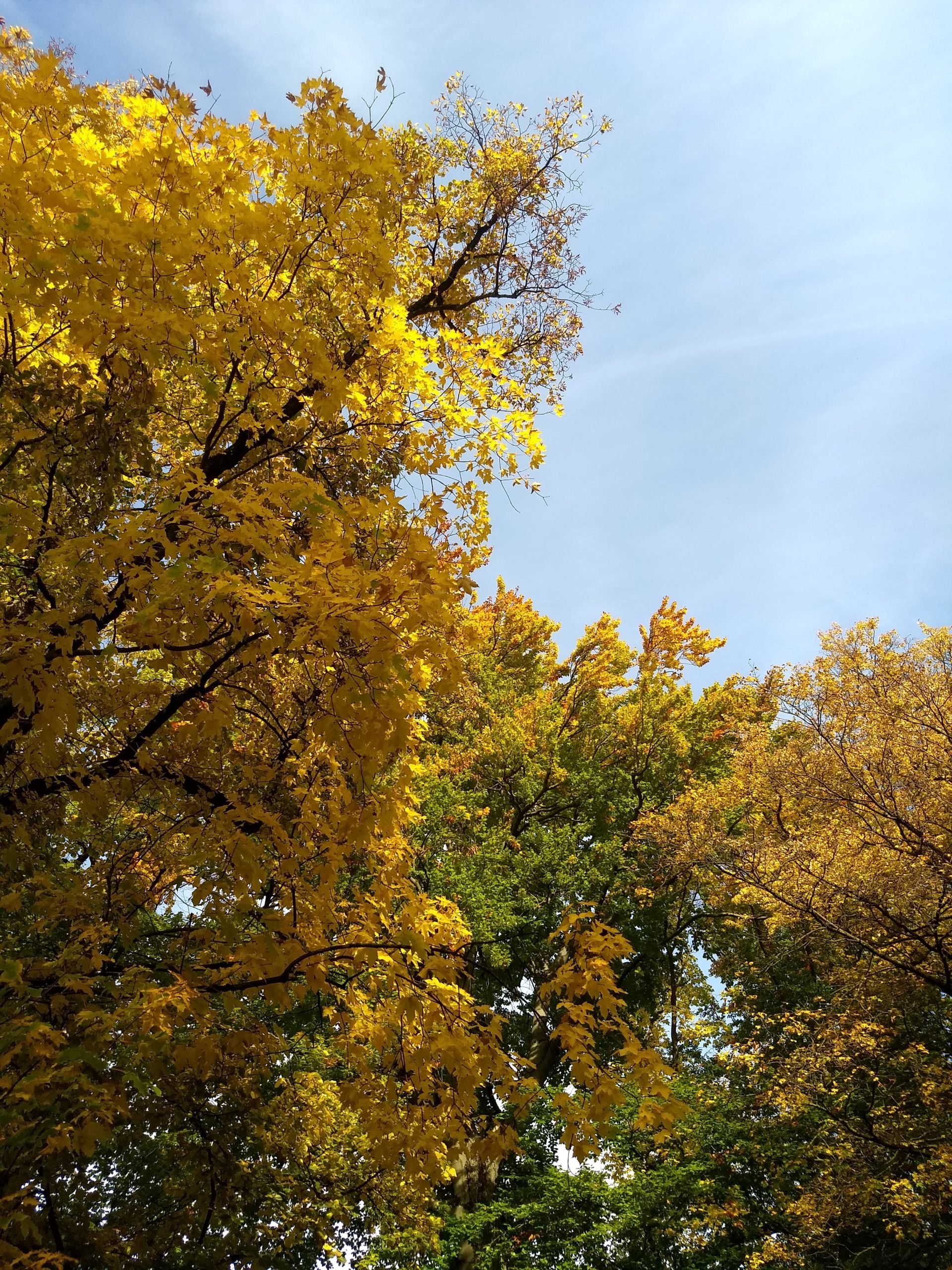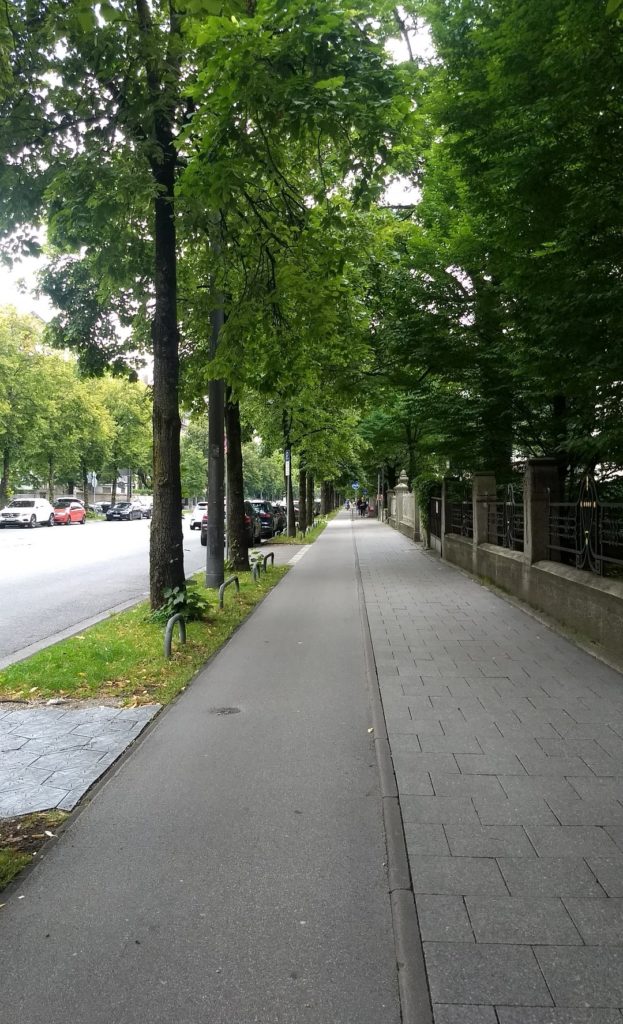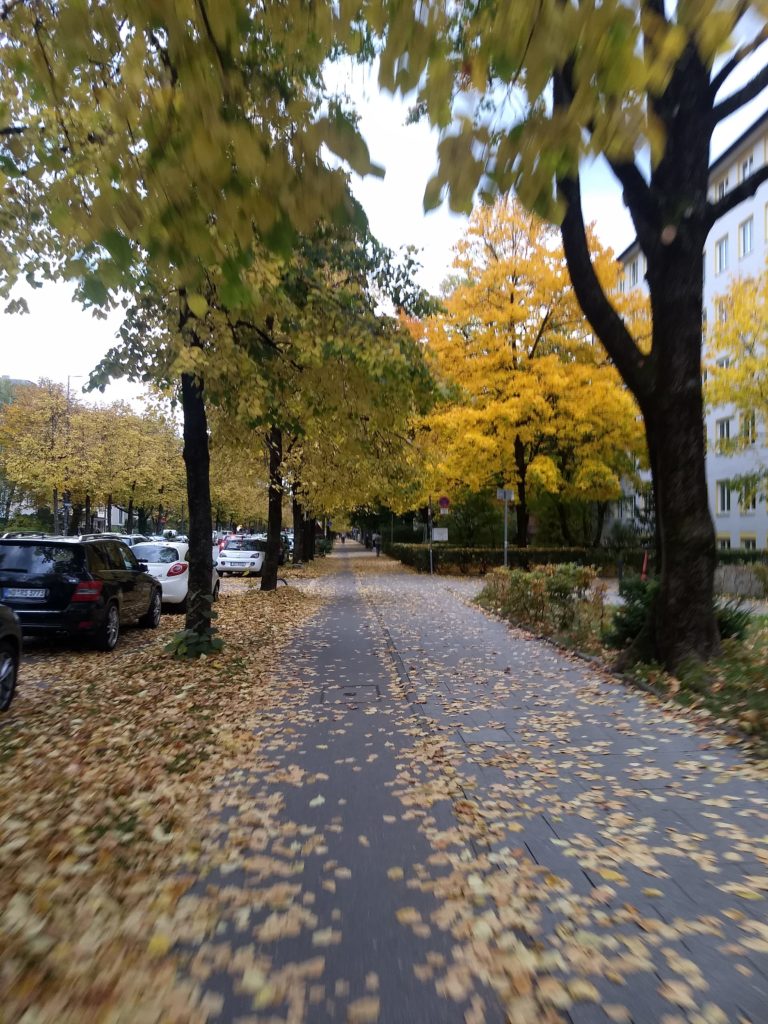Green Munich
Trees play an essential role in the comfortable city for multiple reasons but first of all I wondered: Why do I notice particularly trees in Munich than in other towns?
First of all trees are extremely recurrent in the landscape of the streets (not counting the vast parks which look more like forests than town parks). Only the dense old city centre has less trees as the streets are narrower but any widening of the street is an opportunity to plant. The rest of the town has mainly wide street allowing punctual tree plantation between the parked cars of complete lines of trees.
Secondly i believe I noticed the trees more particularly in this city mainly because I am more in contact with them. As the city’s network make it easy to walk to places or cycle instead of using a car, I sensed my surroundings more particularly. While travelling on a bike is a rapid method of transport (usually in Munich google maps indicates approximatively the same journey time between a bike or a car trip in the city centre), one is actually more in contact with it’s surroundings as he is not enclosed in a controlled environment. While traveling on the street we feel the comfort brought by the trees and notice them more.
Lastly, vegetation attracts attention particularly in Munich as the seasons are more marked and transform the landscape. The summer is warm and very green. Autumn covers the town with golden shades. Winter makes leaves disappear and white frost or snow excites children. Finally spring brings back colours and singing birds. Such a variating environment attracts the attention more then everlasting palm trees for example.
So there are definitely many trees in Munich, but why is it so important?
Trees are recognised to have multiple benefits in towns such as storing CO2 gazes, shading the tarmac thus limiting the over-heating of those surfaces with a low albedo ratio, evapotranspiration also helps regulation temperatures and releasing freshness at night. We could also mention the support trees bring to city biodiversity as illustrated by London becoming a National Park City in July 2019 thanks to it’s numerous green space. I would although like to mention specific characteristics with are not necessarily the first to come into mind.
Comfort
Trees are recognized to have multiple benefits in towns such as storing CO2 gazes, shading the tarmac thus limiting the over-heating of those surfaces with a low albedo ratio, evapotranspiration also helps regulation temperatures and releasing freshness at night. We could also mention the support trees bring to city biodiversity as illustrated by London becoming a National Park City in July 2019 thanks to its numerous green space. I would although like to mention specific characteristics with are not necessarily the first to come into mind. The first to mention, obvious but worth to emphasize, is the comfort for the pedestrian and the cyclists. Looking at cycling particularly as it is my daily case, we all know it can get tiring and sweaty. Reaching a shaded cycle lane is a relief under a summer burning sun! One notices the benefits of the trees very particularly in these moments. Likewise in bad weather, a cyclist facing the rain or wind is glad to find shelter for his route under the leaves.
Diversity of Landscape
Coming back to the mention of seasons in Munich, Trees create a strong awareness of one’s environment. We notice the time going past with the variation of seasons. By spending our time in the underground, white lit offices and in front of screens, such casualties could be missed. Moreover the variation of the street landscape teases the eye and reveals the space in a dynamic way instead of always similar looking concrete and glass facades. With vegetation shades vary during the day, street perspectives are revealed when leaves fall and glass reflect calming green leaves instead of dark roads.
Traffic regulation
Finally, Trees and vegetation are an urban planning tool in its self. They unable to fragment the streets, give a rhythm, mark openings. An alignment of trees along a cycle lane actually creates a protective separation between the fast traffic and the cyclists. In other cases they allow to mark the limits of a public square and separate it from the busy city. The later can also play a role in traffic regulation. And example of this is in Isabelastr. In Munich. Trees surround street crossing allowing to mark them in the street perspective. The vegetation obstructs actually the visibility of car circulating on the perpendicular lanes. This forces the drivers to reduce their speed in order to evaluate the possibly of crossing. The regularity of these crossings and the little visibility actually forced all vehicles to drive slowly and precariously in this residential road thus disturbing less the inhabitants. The book “Reconquérir les rues” Nicolas Soulier illustrates clearly this benefit of trees in a renovation of a high speed road supposed to become an urban boulevard. Limiting visibility and therefore security forces the drivers to slow down and actually bring more security and comfort to the pedestrians.
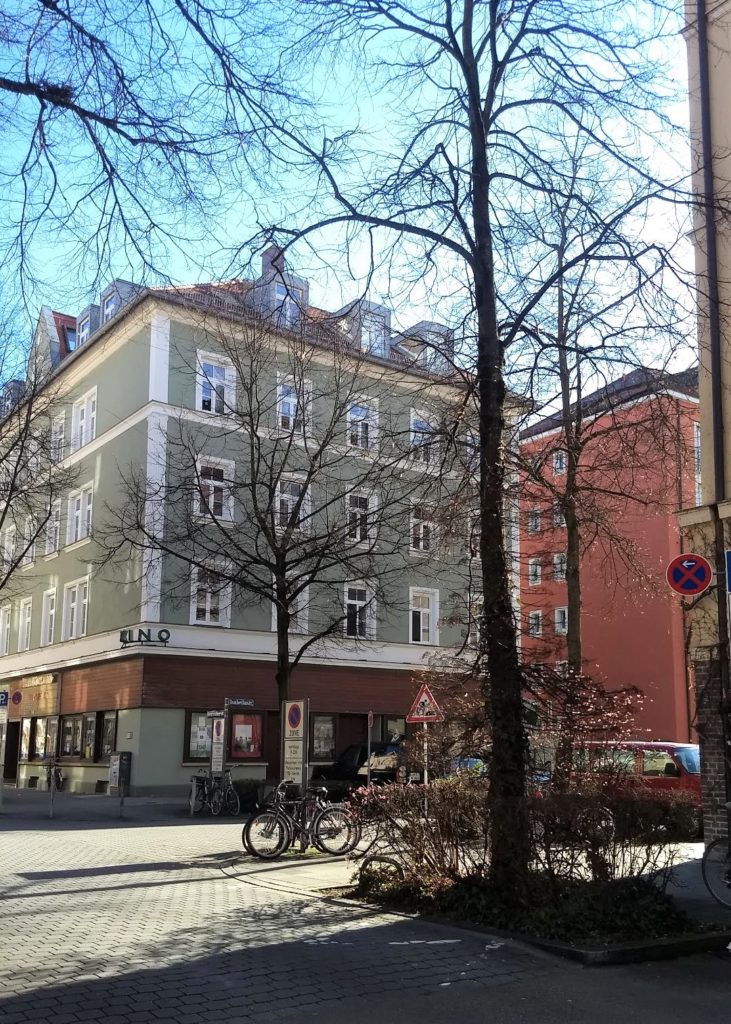
Challenges to overcome
As we understand clearly, there is many advantages at planting trees in cities. On the other hand we should not forget the other more technical reasons which often make towns less willing to cover the streets in vegetation. These include costs of buying the plants, maintenance and picking up the leaves/ fruits, shadows on windows of the apartments and less visibility of the buildings behind. An example illustrates this point in Los Angeles where the palm trees where choses to frame the avenues even though they are not local species. These had the advantage to have a thin trunk thus allowing the driver to see the shopping windows along the avenue and encourage them to stop. Lastly the biggest enemy of trees I believe is competition for space. Planting trees mean larger streets, or sacrificing some parking spots or narrowing driving space for cars. It is part of a bold but necessary decision.
Refferences in this article:
Books:
- N. Soulier, Reconquérir les rues, 2012, Edition Ulmer Podcast:
Podcasts:
- 385-Shade, 99% invisible, 15.01.2019
Articles:
- L’arbre en milieu urbain acteur du climat en région Hauts-de-France, nov. 2019, ADEME, https://www.ademe.fr/sites/default/files/assets/documents/l-arbre-en-milieu-urbain-hauts-de-france-8747.pdf
- G. Lawton, All Hail London’s urban jungle as it becomesfirst national park city, 17th July 2019, New Scientist
Podcasts:
- 385-Shade, 99% invisible, 15.01.2019
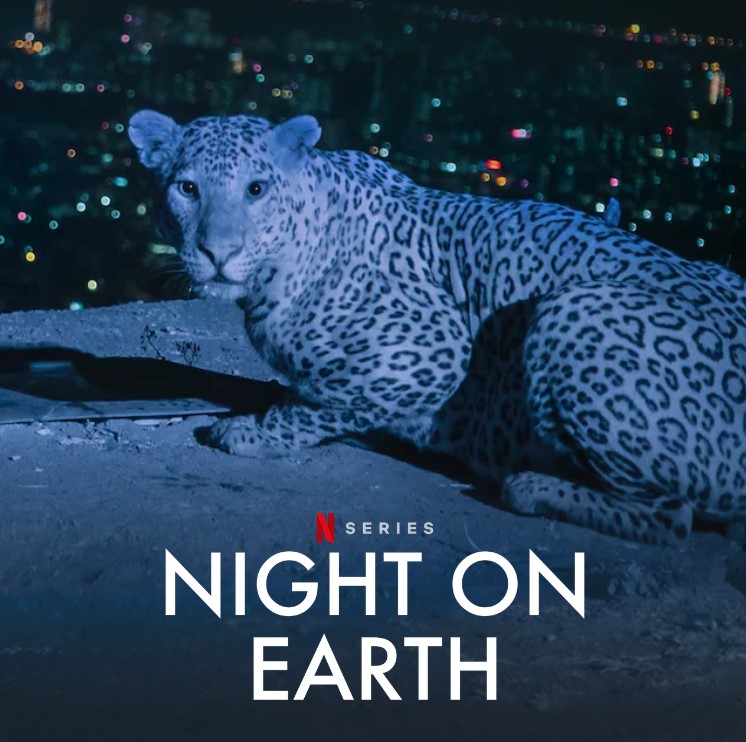
Extra note on biodivertsity:
To appreciate the impressive biodiversity that we can find in our cities, check out the episode Night on Earth from the series Sleepless cities on Netflix. It depicts how incredibily animals adapted to live along us in the ressourcefull cities.
